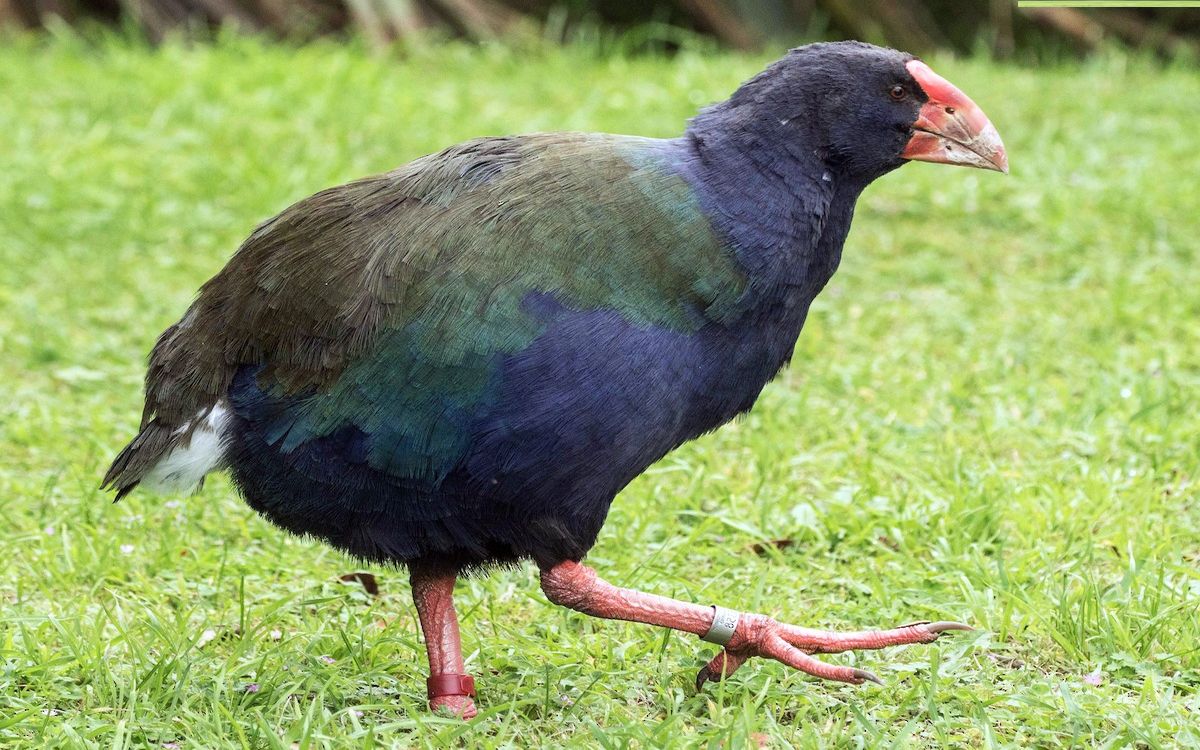
Did you know that the Takahe, a flightless bird native to New Zealand, was once thought to be extinct? This fascinating bird, with its vibrant blue and green feathers, was rediscovered in 1948 after being unseen for nearly 50 years. The Takahe is not just a bird but a symbol of resilience and survival. Living in the remote Murchison Mountains, these birds have adapted to a unique lifestyle, feeding primarily on tussock grasses. Conservation efforts have been crucial in protecting this rare species from threats like habitat loss and predators. Want to learn more about the Takahe? Here are 34 intriguing facts that will give you a deeper understanding of this remarkable bird.
What is a Takahe?
The Takahe is a flightless bird native to New Zealand. Known for its vibrant blue and green plumage, this bird has a fascinating history and unique characteristics. Let's dive into some intriguing facts about the Takahe.
Takahe's Unique Characteristics
Takahe birds are unlike any other. Their distinct features and behaviors make them a subject of interest for bird enthusiasts and scientists alike.
- The Takahe has a striking blue and green plumage, making it one of the most colorful birds in New Zealand.
- Despite being flightless, Takahe have strong legs and can run surprisingly fast.
- They have large, red beaks which they use to forage for food.
- Takahe are known for their loud, distinctive calls that can be heard over long distances.
- These birds have a unique way of walking, often described as a "waddle."
Habitat and Diet
Understanding where Takahe live and what they eat provides insight into their daily lives and survival strategies.
- Takahe primarily inhabit alpine grasslands and forests in New Zealand.
- They feed on a variety of grasses, shoots, and seeds.
- During winter, they descend to lower altitudes in search of food.
- Takahe use their strong beaks to pull up tussock grass and eat the nutritious bases.
- They also consume insects and other small invertebrates.
Conservation Efforts
The Takahe's survival story is one of the most remarkable in conservation history. From being thought extinct to a successful recovery program, their journey is inspiring.
- Takahe were once thought to be extinct until they were rediscovered in 1948.
- The New Zealand Department of Conservation has been actively involved in Takahe recovery programs.
- Breeding programs have been established to increase their population.
- Predator control measures have been implemented to protect Takahe from introduced species like stoats and cats.
- Conservationists have created predator-free sanctuaries to provide safe habitats for Takahe.
Reproduction and Lifespan
Takahe have interesting reproductive behaviors and a relatively long lifespan for birds.
- Takahe typically lay one to three eggs per breeding season.
- Both parents share the responsibility of incubating the eggs.
- Chicks are born with a fluffy, black down that gradually changes to adult plumage.
- Takahe can live up to 20 years in the wild.
- In captivity, some Takahe have been known to live even longer.
Social Behavior
Takahe are social birds with complex behaviors that help them thrive in their environment.
- Takahe live in small family groups, often consisting of a breeding pair and their offspring.
- They are territorial and will defend their area from other Takahe.
- Communication among Takahe includes a variety of calls, body postures, and displays.
- During the breeding season, males perform elaborate courtship displays to attract females.
- Takahe are known to form lifelong monogamous pairs.
Historical Significance
The Takahe holds a special place in New Zealand's cultural and natural history.
- The Takahe is considered a taonga (treasure) by the Maori people.
- Early European settlers were fascinated by the Takahe and documented their observations in journals.
- The rediscovery of the Takahe in 1948 was a significant event in New Zealand's conservation history.
- Takahe have been featured on New Zealand postage stamps and currency.
- The bird is a symbol of resilience and the importance of conservation efforts.
Fun and Lesser-Known Facts
Here are some fun and lesser-known tidbits about the Takahe that might surprise you.
- Takahe have a unique way of preening their feathers using their beaks and feet.
- They are excellent swimmers and can cross streams and small bodies of water.
- Takahe have a slow metabolism, which helps them survive in harsh conditions with limited food.
- The Takahe's scientific name is Porphyrio hochstetteri, named after the Austrian geologist Ferdinand von Hochstetter.
The Takahe's Remarkable Comeback
The takahe's story is one of resilience and hope. Once thought extinct, these unique birds have made an incredible comeback thanks to dedicated conservation efforts. Their vibrant blue and green feathers, large size, and quirky behaviors make them a fascinating subject for bird enthusiasts and nature lovers alike.
Understanding the takahe's journey from near extinction to a growing population highlights the importance of preserving our natural world. These birds remind us that with effort and commitment, we can make a difference in protecting endangered species.
Next time you hear about conservation success stories, remember the takahe. Their remarkable recovery serves as a beacon of hope for other species facing similar challenges. Let's continue to support and celebrate these efforts, ensuring that future generations can enjoy the beauty and wonder of creatures like the takahe.
Was this page helpful?
Our commitment to delivering trustworthy and engaging content is at the heart of what we do. Each fact on our site is contributed by real users like you, bringing a wealth of diverse insights and information. To ensure the highest standards of accuracy and reliability, our dedicated editors meticulously review each submission. This process guarantees that the facts we share are not only fascinating but also credible. Trust in our commitment to quality and authenticity as you explore and learn with us.
